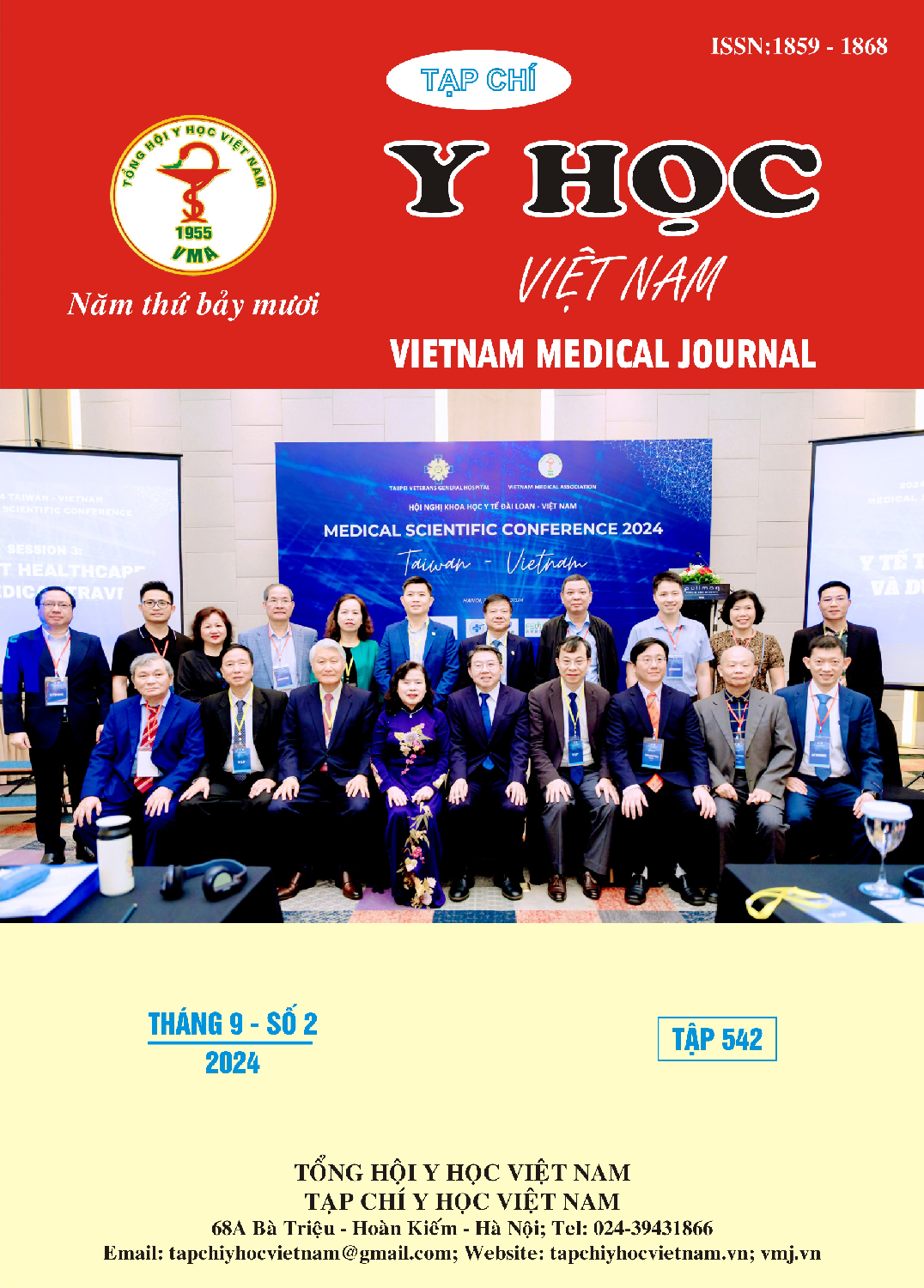ĐẶC ĐIỂM CỦA POLYP ĐẠI TRỰC TRÀNG KÍCH THƯỚC 10 – 19 MM
Nội dung chính của bài viết
Tóm tắt
Mục tiêu: Mô tả đặc điểm hình ảnh nội soi và mô bệnh học của polyp đại trực tràng kích thước 10 – 19 mm và mối liên quan giữa mô bệnh học với một số yếu tố. Đối tượng và phương pháp nghiên cứu: Nghiên cứu cắt ngang trên 98 bệnh nhân có polyp đại trực tràng kích thước 10 – 19 mm, điều trị tại bệnh viện Quân y 175, thời gian từ tháng 01 năm 2022 đến tháng 12 năm 2023. Chẩn đoán mô bệnh học polyp đại trực tràng theo tiêu chuẩn của Tổ chức Y tế thế giới năm 2019. Kết quả: Tuổi trung bình của bệnh nhân là 58,2 ± 10,3. Tỷ lệ nam/ nữ là 7,2. Polyp đại tràng đoạn xa chiếm tỷ lệ cao hơn so với polyp đại tràng đoạn gần (74,4% so với 25,6%), trong đó polyp đại tràng sigma (46,9%), polyp trực tràng (14,3%), polyp đại tràng xuống (12,2%). Tỷ lệ polyp có cuống là 52%, polyp không cuống là 48%. Tỷ lệ carcinoma tuyến là 6,1% và tỷ lệ polyp tuyến ống nhánh là 11,2%. Loạn sản mức độ cao chiếm 6,6% trong tổng số polyp tân sinh. Tỷ lệ ung thư tuyến đại trực tràng ở nhóm bệnh nhân ≥ 60 tuổi cao hơn so nhóm bệnh nhân dưới 60 tuổi, ở nữ giới cao hơn so với nam giới, sự khác biệt có ý nghĩa thống kê (với p < 0,05). Không có mối liên quan giữa mô bệnh học với vị trí, hình dạng và đặc điểm bề mặt của polyp kích thước 10 – 19 mm. Kết luận: Polyp kích thước 10 – 19mm có tỷ lệ ác tính là 6,1%. Tỷ lệ polyp ác tính tăng theo tuổi, cao hơn ở nữ giới và không có mối liên quan với đặc điểm vị trí, hình dạng và bề mặt polyp trên nội soi.
Chi tiết bài viết
Từ khóa
Polyp đại trực tràng kích thước 10-19mm, hình ảnh nội soi, mô bệnh học.
Tài liệu tham khảo
2. Brenner, H., et al., Role of colonoscopy and polyp characteristics in colorectal cancer after colonoscopic polyp detection: a population-based case-control study, Ann Intern Med, 2012. 157(4): p. 225-32.
3. Ferlay, J., et al., Cancer incidence and mortality worldwide: sources, methods and major patterns in GLOBOCAN 2012, Int J Cancer, 2015. 136(5): p. E359-86.
4. Jung, K.W., et al., Cancer Statistics in Korea: Incidence, Mortality, Survival, and Prevalence in 2016, Cancer Res Treat, 2019. 51(2): p. 417-430.
5. Kim, E.C. and P. Lance, Colorectal polyps and their relationship to cancer. Gastroenterol Clin North Am, 1997. 26(1): p. 1-17.
6. Nagtegaal, I.D., et al., The 2019 WHO classification of tumours of the digestive system. Histopathology, 2020. 76(2): p. 182-188.
7. Parsa, N., et al., Risk of cancer in 10 - 19 mm endoscopically detected colorectal lesions, Endoscopy, 2019. 51(5): p. 452-457.
8. Silva, S.M., et al., Influence of patient age and colorectal polyp size on histopathology findings, Arq Bras Cir Dig, 2014. 27(2): p. 109-13.
9. Sousa Andrade, C., et al., [A thousand total colonoscopies: what is the relationship between distal and proximal findings?], Acta Med Port, 2008. 21(5): p. 461-6.
10. Turner, K.O., R.M. Genta, and A. Sonnenberg, Lesions of All Types Exist in Colon Polyps of All Sizes, Am J Gastroenterol, 2018. 113(2): p. 303-306.


